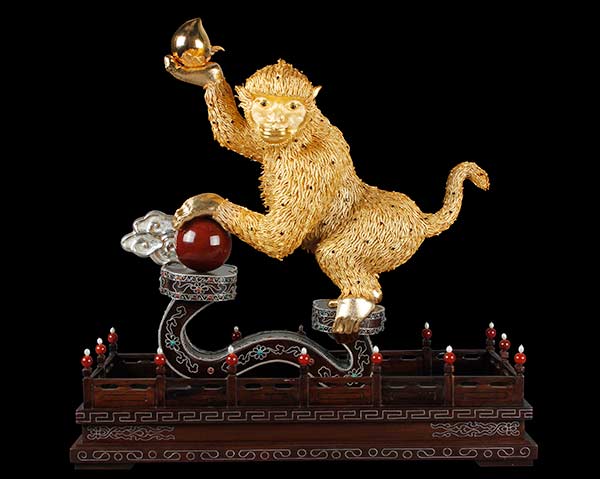
"One hundred years from now, collections in my museum will become precious historical relics," Sun Songlin, founder of a Beijing-based private museum said.
"We replicate national treasures as a way to protect and inherit ancient crafts, and we also create national treasures," Sun said, explaining the main goals of the National Museum of HUAXIA.
The museum doesn't have any antiques in storage, but on display are contemporary art pieces, especially art made using traditional techniques or intangible cultural heritage methods.
"Most museums are protecting cultural relics, but if we don't protect contemporary arts, they will become endangered relics in the future," Sun said.
Therefore, the museum has absorbed a batch of prominent master craftsmen, including the old and the young. Young artists get a platform to show their talents and those older can better pass down their handicraft traditions.
Sun has long been recognized as a protector of traditional arts in China. He rose to fame owing to his contribution to the preservation of filigree and inlay technique.
Filigree and inlay is a fine craftwork that was exclusively applied to jewelry and ornaments made for China's imperial families. The technique appeared some 2,700 years ago and is among the eight superb crafts of Beijing.
The skill is actually a combination of two: filigreeing and inlaying. Filigree is applying nipping, plaiting, filling, jointing, piling and other handiwork to form various shapes out of very fine gold and silver threads. Inlay means to work gold or silver slices into different shapes, patterns or containers.
The craft, requiring exquisite workmanship from highly trained craftsmen, was listed among the nation's intangible cultural heritages in 2008.
"There were less than 10 people who knew the craft in 2008 in Beijing, and now there are more than 200 people doing this," Sun said, adding he is quite happy more people are using the technique.


















































